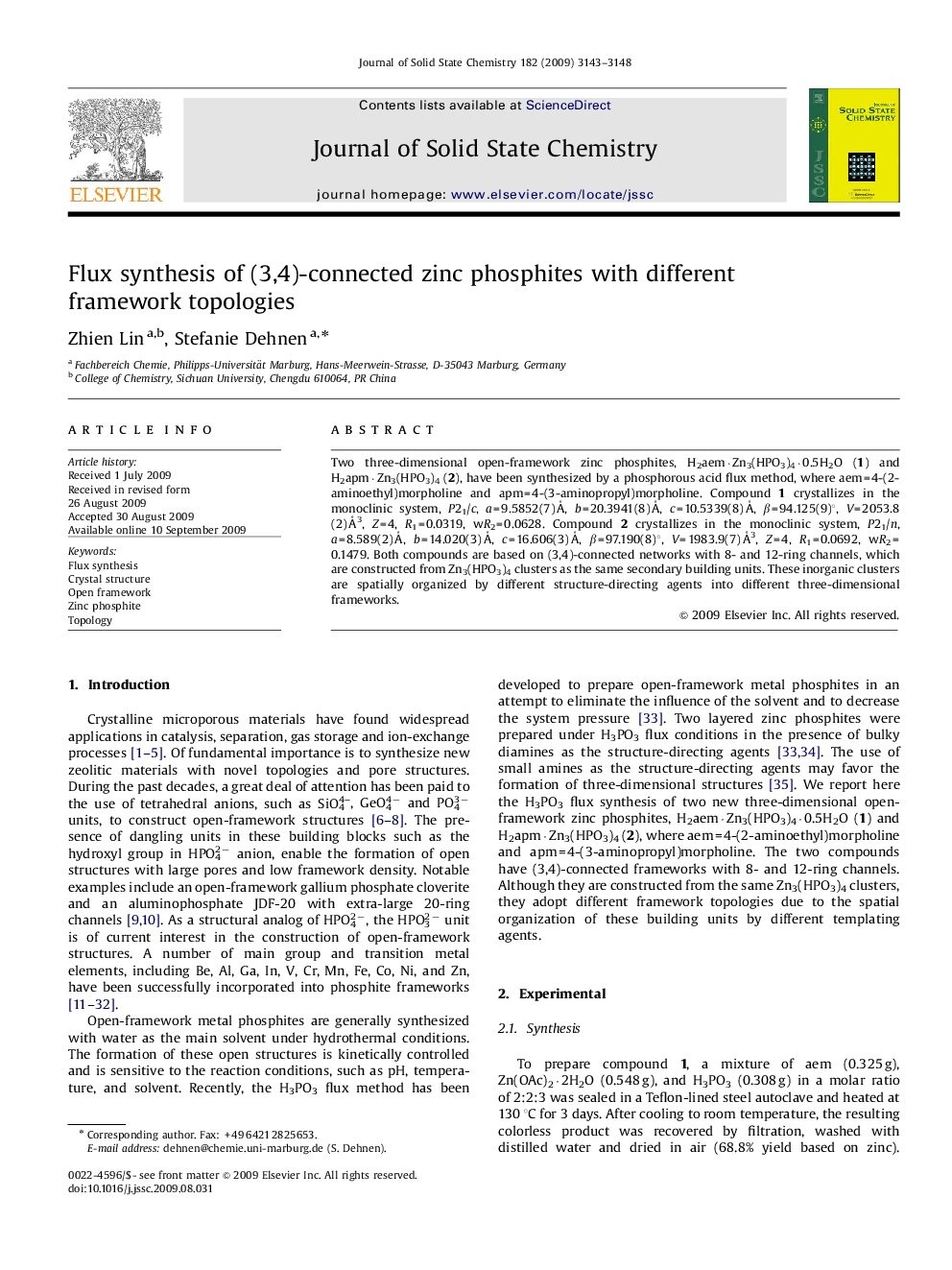| Article ID | Journal | Published Year | Pages | File Type |
|---|---|---|---|---|
| 1329206 | Journal of Solid State Chemistry | 2009 | 6 Pages |
Two three-dimensional open-framework zinc phosphites, H2aem·Zn3(HPO3)4·0.5H2O (1) and H2apm·Zn3(HPO3)4 (2), have been synthesized by a phosphorous acid flux method, where aem=4-(2-aminoethyl)morpholine and apm=4-(3-aminopropyl)morpholine. Compound 1 crystallizes in the monoclinic system, P21/c, a=9.5852(7) Å, b=20.3941(8) Å, c=10.5339(8) Å, β=94.125(9)°, V=2053.8(2) Å3, Z=4, R1=0.0319, wR2=0.0628. Compound 2 crystallizes in the monoclinic system, P21/n, a=8.589(2) Å, b=14.020(3) Å, c=16.606(3) Å, β=97.190(8)°, V=1983.9(7) Å3, Z=4, R1=0.0692, wR2=0.1479. Both compounds are based on (3,4)-connected networks with 8- and 12-ring channels, which are constructed from Zn3(HPO3)4 clusters as the same secondary building units. These inorganic clusters are spatially organized by different structure-directing agents into different three-dimensional frameworks.
Graphical abstractTwo three-dimensional open-framework zinc phosphites have been synthesized by a phosphorous acid flux method. The two compounds are constructed from Zn3(HPO3)4 clusters and have noz and pcu topologies, respectively.Figure optionsDownload full-size imageDownload as PowerPoint slide
